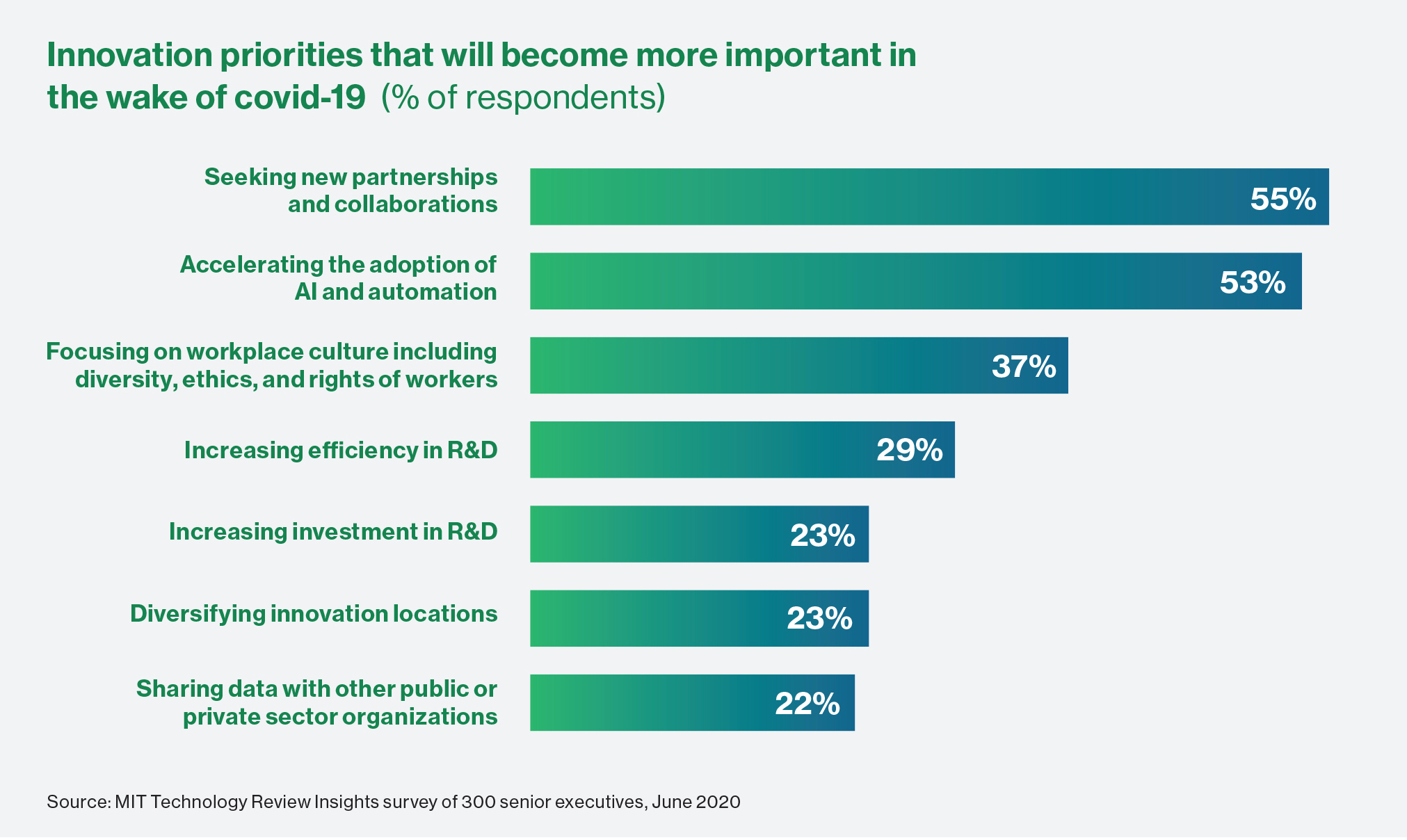From chief technology officer to CEO
In the digital era, strong technology leadership correlates ever more closely with business revenue growth. Technology strategy, and the ability of chief technology officers to deliver it, is key to business success, not just for managing the performance and cost efficiency of enterprise technology, but to create the architecture and agility for new business models, taking advantage of emerging opportunities, and reaching customers in innovative ways.
The overall technology architecture of a business is increasingly delivered as a platform that enables digital transformation across the enterprise. This includes rolling out new software and digitalizing processes, building up analytics and machine-learning capabilities, integrating with customers and third parties, and delivering the tools and connectivity that allow employees to work productively from anywhere.
This article is written by Insights, the custom content arm of MIT Technology Review. It was not produced by the editorial staff.
Coronavirus and the digital imperative
A company’s ability to compete in the digital age (or not) has been laid bare by the coronavirus pandemic. The businesses that have been slow to digitalize customer channels, supply chains, and employee ways of working have struggled to adapt and have been left scrambling to update their infrastructure. The more technology-forward businesses have been able to adapt much more readily.
Retail provides a clear example. While global retail sales will contract 5.6% this year, e-commerce is set to grow 16.5%, to $3.9 trillion in 2020, amounting to 16% (up from 13% last year) of global sales. Retailers with the most robust digital channels are best placed to maintain growth.
In many ways, the pandemic has sharpened minds around the need for transformation and enabled companies to develop and deploy systems at a pace that would never happen during normal times. Without business travel and other distractions, leadership teams have been able to focus on new initiatives. McKinsey interviewed an executive at a large bank who said they finally launched a new customer relationship management program that there had been no time to do before. Necessity, so the saying goes, is the mother of invention.
Technology is a CEO priority
While CTOs are at the helm of executing the digital transformation, the strategy and roadmap are shaped at board-level, to steer the business through shifting market and regulatory forces. Key to this is unlocking a more agile business model, one of the primary drivers for this year’s rapid shift towards cloud .
In the past, cloud computing was considered a tactical cost-reduction ploy. But its more important benefits are in enabling businesses to grow revenue, through faster new product development, process innovation, and more dynamic customer relationships. Cloud enables companies to identify more customers and increase sales conversion, at the same time improving customer experiences with higher degrees of service and personalization.
Cloud technology also creates more nimble operating environments for businesses, translating decisions into technology action in real time, and as a “sandbox” environment for collaboration, both internally and externally, with an ecosystem of participants. The cloud is also facilitating faster approaches to software development such as “DevOps” practices, that technology leaders increasingly use to manage teams in fast production cycles.
A recent MIT Technology Review survey found that 61% of the 300 business leaders polled said that they were increasing their investment in cloud technologies as a direct result of the pandemic. Innovation priorities, they said, would focus primarily on seeking new partnership and collaborations, and adopting AI and automation technologies.

“Cloud-based infrastructure is a digital business platform of choice,” said Jeff Zhang, president of Alibaba Cloud Intelligence at the latest Apsara Conference, the annual technology flagship event by Alibaba. “CTOs that leverage cloud capabilities will continue to be a pivotal business leader, guiding business transformation to parts of the organization that will benefit from digitalization—or rather, even more digitalization.” Zhang added.
One example of the rapid digitalization enabled by cloud is the partnership between global automotive leader Ford and Alibaba Cloud, which led to the development of Ford Mall, an online customer channel that was built in under six months and enabled Ford to share information, improve interactions, and grow revenue. Ford Mall has become a vital channel for reaching customers in what might traditionally be considered a more “physical” business. However, surveys show that 92% of car buyers do their research online and spend up to 60% of their overall shopping time on the internet.
CTO as the next CEO?
Helping the business to navigate through covid-19 will undoubtedly continue to elevate the strategic importance of CTOs within their organizations. Indeed, there are a growing number of examples of CTOs who have gone on to become CEO. Many of them are in technology companies, such as the current heads of US and UK telecommunications carriers Verizon and BT Openreach, but there are also examples from organizations that would not traditionally be considered “tech companies,” including GE Transportation, the UK’s National Health Service, and Indonesia’s Garuda airline.
This trend highlights the extent to which these organizations are putting technology at the heart of their strategy for future business growth and shows how much the world has changed since technology leaders reported to CFOs, since their department represented an operating cost.
CTOs are also increasingly viewing the CEO role as a natural progression. A CTO survey by HR consulting firm Korn Ferry found that 51% would like to go on to become CEO—but only 12% would want it to be their immediate next move. With more than two thirds saying that steering a business through a transformation had been their most important career opportunity, for many CTOs, the post-pandemic recovery is likely to be a career-defining period. Success will be based on the speed with which they can drive business agility and enable revenue growth.
from Computing – MIT Technology Review https://ift.tt/33h9vmx
Post a Comment
0 Comments